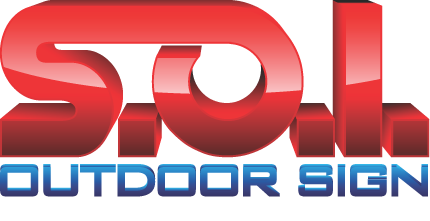Navigating Obsolescence: A Guide to Understanding Inventory Accounting for Procurement

Navigating Obsolescence: A Guide to Understanding Inventory Accounting for Procurement
May 19

Though there are several great inventory forecasting solutions on the market, you can always rely on a 3PL to provide the insights you need to better forecast demand without the extra cost. If the products still have potential, you could also sell them at a discount by running a promotion, such as a flash sale. Having access to supply chain data can help you improve supply chain efficiency, including how well inventory is managed. With more visibility, you can find ways to optimize inventory to meet demand and avoid common inventory issues, such as overstocking. Though inventory forecasting is rarely 100% accurate, it becomes even more challenging when there isn’t enough historical order data or market insights to help make the best decisions.

Example of the Accounting for Obsolete Inventory
An asset may become obsolete due to better designs, new inventions, or simply changing fashions. This may result in the asset being discarded even though it is still useful and in excellent physical condition. Estimated useful life is the number of years of service the business expects to receive from the asset. The cost of the asset minus its residual value is called the depreciable cost of the asset. However, if the asset is expected not to have residual value, the full cost of the asset is depreciated. The decisions that are made about how much depreciation to charge off are influenced by the accountant’s judgment.
Functional obsolescence definition
There are many different ways to keep track of inventory, but one of the most important things is to have a system in place that works for your company. This might involve using software to track inventory levels, or it could be as simple as keeping a physical count of what is on hand. The process involves evaluating the inventory’s market value, determining the extent of the obsolescence, and recording a journal entry to reduce the inventory value and recognize an expense on the income statement. Companies also take functional obsolescence into consideration in long-term business planning.

Technology-Driven Obsolescence

Generally accepted accounting principles require that companies periodically examine their inventory balance for inventory that is no longer able to be sold for as much as the company paid for the goods. Understanding how to account for obsolete inventory in accordance with GAAP can help you make sure that your financial statements are properly presented and your books are in order. Ultimately, by following these guidelines for successful inventory accounting processes; companies will maximize their efficiencies while minimizing risks resulting from obsolescence issues. When the asset was sold for $27,100, the accounting records would show $30,900 in depreciation (cost of $58,000 less the sales price of $27,100). Adding the loss of $2,100 to the total depreciation expense of $28,800 results in a cost of $30,900 for use of the asset rather than the $28,800 depreciation. While some obsolete inventory items can be sold at a deep discount, some items are simply disposed of.
JIT helps reduce the likelihood of overstocking on products by strategically placing orders based on actual demand rather than forecasts. Manufacturers main concern with obsolescence is in their fixed assets or plant assets. Manufacturers spend large amounts of their budgets on machinery and equipment to help produce products. Obsolescence differs from the ongoing decline in the value of assets that is caused by normal usage, resulting in wear and tear. Normal usage is accounted for with ongoing charges to depreciation, which reduce the carrying amount of an asset by a consistent amount over time. Conversely, obsolescence can result in the immediate and total write-off of the carrying amount of an asset.
Coverage Across Various Inventory Items
He is a CFA charterholder as well as holding FINRA Series 7, 55 & 63 licenses. He currently researches and teaches economic sociology and the social studies of finance at the Hebrew University in Jerusalem. For brands looking to improve inventory visibility and tracking within their own warehouses, look no further than ShipBob’s warehouse management system (WMS). With ShipBob, you can split inventory obsolescence in accounting across our international fulfillment network and easily track and manage inventory in real time all through ShipBob’s user-friendly merchant dashboard. There’s also the option of remarketing items that are at risk of becoming obsolete. Inventory is at the heart of an online business, so it’s important to have access to data that provides insights into how well your supply chain is performing.
Supply Chain Digitalization Assessment
- Though obsolete inventory can still impact ideal profit margins, putting items on sale can help replenish some of the costs by attracting bargain shoppers.
- When inventory can’t be sold in the markets, it declines significantly in value and could be deemed useless to the company.
- A long-term asset may lose its value, or a company may sell a long-term asset.
- Budgeting for obsolescence risk is challenging because it is difficult to predict obsolescence and the exact rate of technological innovation.
- Depreciation occurs when a non-current asset loses value due to use or passage of time.
For this entry, the remaining depreciable balance of the net book value is allocated over the new useful life of the asset. To work through this process with data, let’s return to the example of Kenzie Company. The journal entry is debiting allowance for obsolete inventory $ 5,000 and credit inventory $ 5,000. The journal entry is debiting allowance for obsolete inventory and credit inventory.
- The obsolete inventory percentage is used to derive that portion of inventory that is no longer usable.
- Obsolescence can arise when there are less expensive alternatives in the marketplace, or when customer preferences change.
- Functional obsolescence is the impaired usage of an asset because its design is outdated and it can no longer be updated to handle current requirements.
- One way to minimize financial impacts from obsolescence is by implementing effective inventory management systems that monitor stock levels regularly.
- As business accounts are usually prepared on an annual basis, it is common to calculate depreciation only once at the end of each financial year.
- In this article, we discuss how to avoid, identify, reduce, and manage obsolete inventory to ensure a more profitable business.
- Trend line tracking can also be used to see if there has been a gradual change over time that should be rectified.
Inaccurate inventory forecasting
The expenditure on the purchase of machinery is not regarded as part of the cost of the period; instead, it is shown as an asset in the balance sheet. Depreciation is the reduction in the value of a fixed asset due to usage, wear and tear, the passage of time, or obsolescence. Move away from reactive practices and embrace proactive strategies to reduce excess and obsolete stock. John Freedman’s articles specialize in management and financial responsibility. He is a certified public accountant, graduated summa cum laude with a Bachelor of Arts in business administration and has been writing since 1998.
The accumulated Depreciation account will show a debit balance as a result. Depreciation accounting is a system of accounting that aims to distribute the cost (or other basic values) of tangible capital assets less its scrap value over the effective life of the asset. It’s important for procurement professionals to work closely with finance teams when considering potential obsolescence issues as part of their overall supply chain strategy. Collaboration between departments enables proactive planning and decision-making aimed at minimizing financial risks while maximizing profitability.
- This can lead to a decrease in the value of the company’s assets and negatively impact its financial statements.
- My Accounting Course is a world-class educational resource developed by experts to simplify accounting, finance, & investment analysis topics, so students and professionals can learn and propel their careers.
- Having reliable suppliers ensures timely deliveries while minimizing the chances of receiving defective products or outdated parts.
- Move away from reactive practices and embrace proactive strategies to reduce excess and obsolete stock.
- Optimise supplier relationships, streamline contract management and track savings efficiently with our all-in-one procurement platform.
- With today’s technology and customers’ high expectations, the product lifecycle has become shorter across industries, making inventory become obsolete much faster (e.g., fast fashion).
- For this entry, the remaining depreciable balance of the net book value is allocated over the new useful life of the asset.
The concept of obsolescence is useful while applying depreciation or evaluating stock (inventory). A fixed asset may become obsolete even before the end of its predicted useful life. While evaluating inventory all obsolete (outdated) items are supposed to be charged to the Income statement. The accounting treatment of obsolete items can have a dramatic effect on the financial statements of any business. Therefore, it is important for every owner to understand the principles of accounting for obsolescence, the factors that can cause obsolescence as well as how to reserve for and properly dispose of obsolete items.
